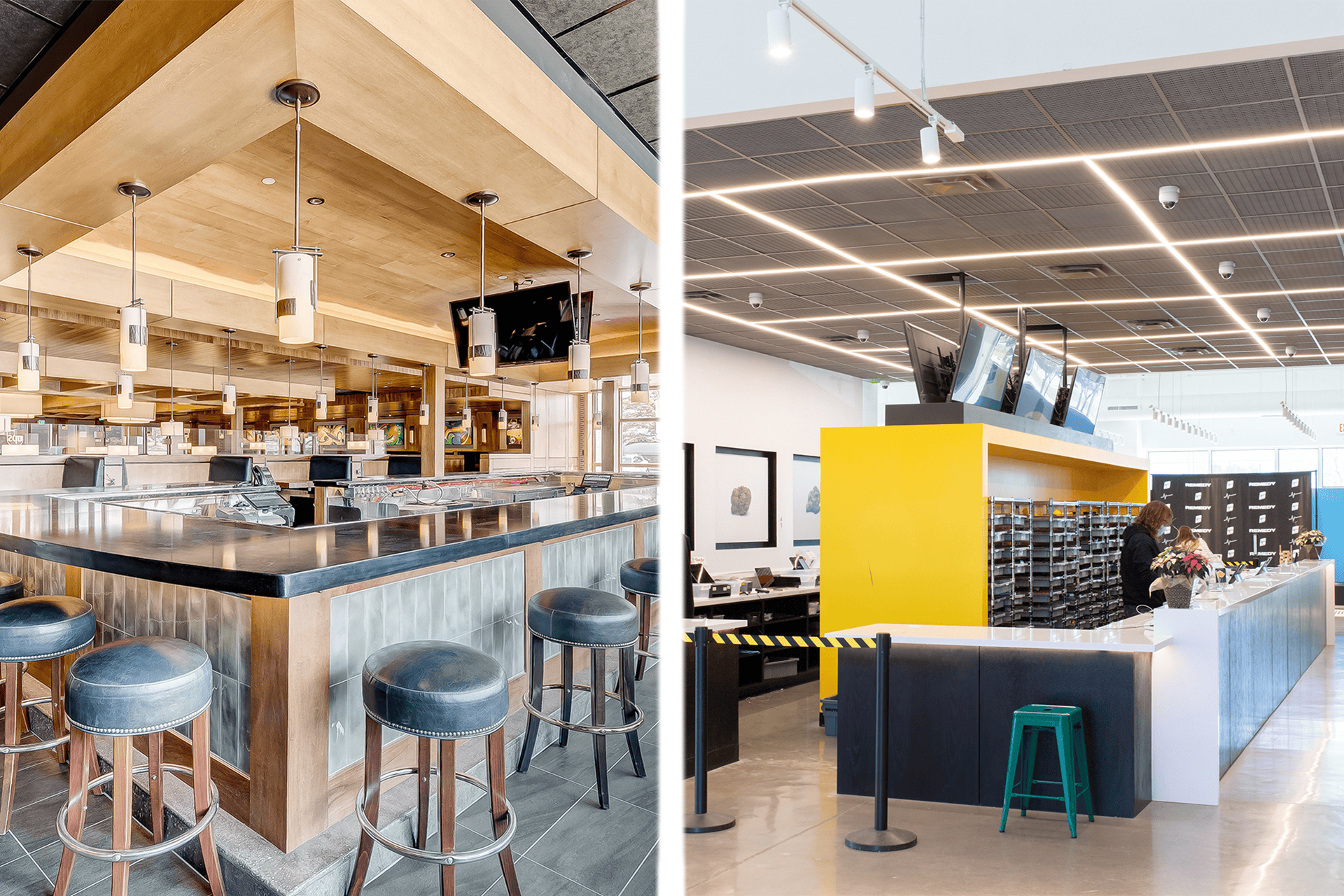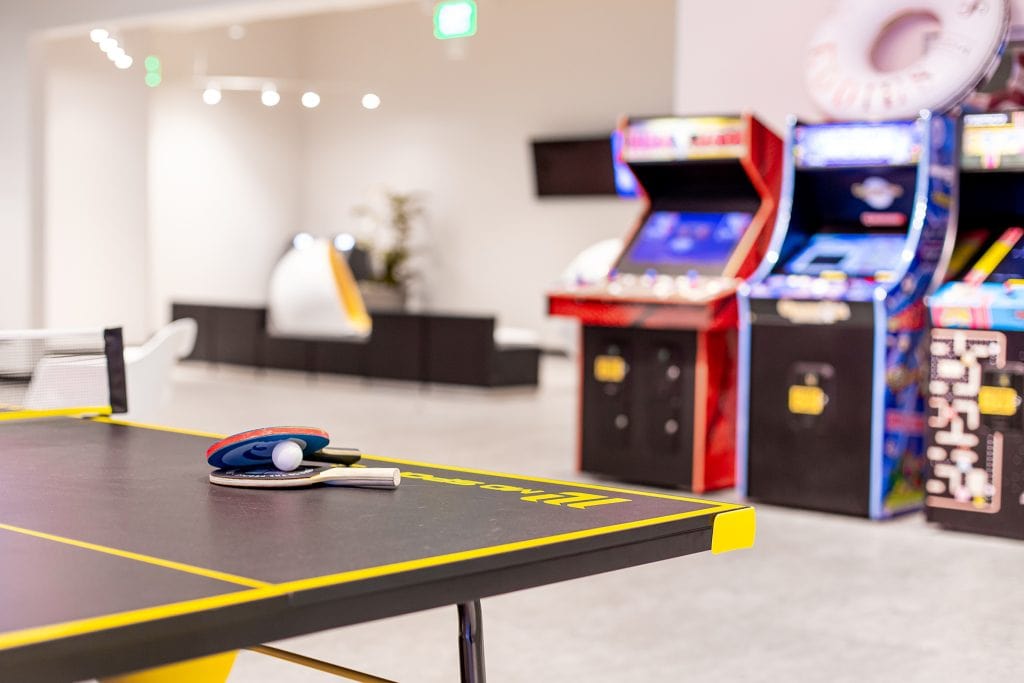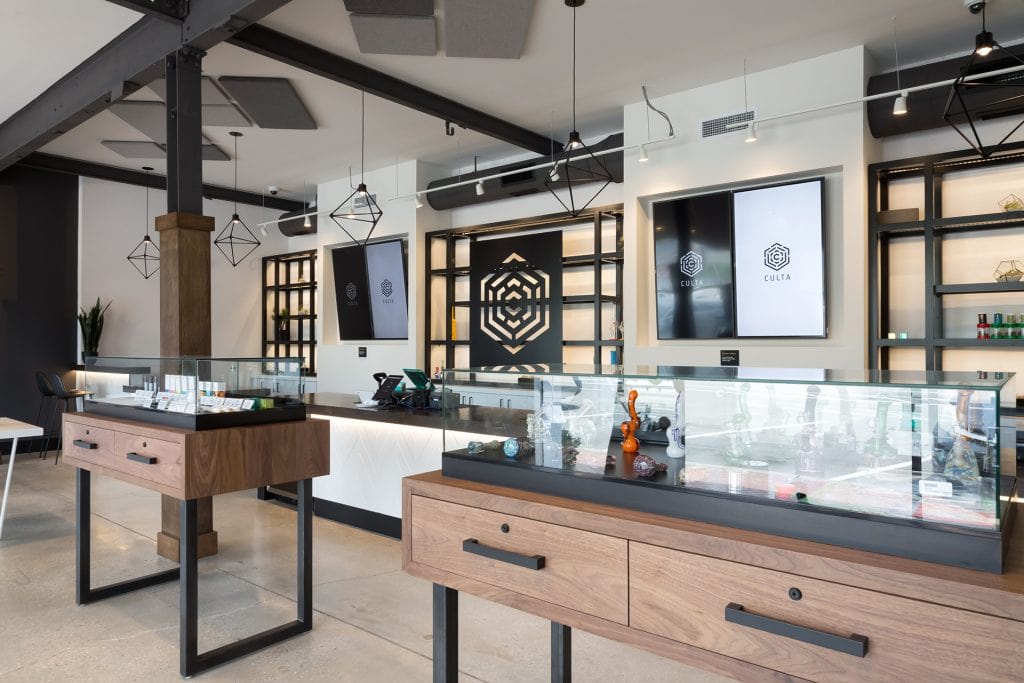
Given the nature of the product being sold, it’s common to approach dispensary design with a retail or pharmaceutical mindset. However, at Curry Architects, through our extensive restaurant background, we’ve discovered valuable insights that better equip us to provide solutions to the unique challenges of these projects.
Customization: Tailoring to Brand Demographics
In the restaurant industry, the design must align with the restaurant type, the desired atmosphere, and the target customer demographic. A fine-dining restaurant has different requirements than a casual café or a fast-food outlet. Similarly, dispensaries are not one-size-fits-all; each has its unique brand identity, atmosphere, and customer base that should be reflected.
We tailor our dispensary designs to resonate with the brand and appeal to the target demographic. For example, some brands want a richer experiential journey for their customers to increase their comfort level, engagement, and desire to linger in the space. We achieve this by planning for more open space, entertainment, gaming, and lounge areas, as well as more room for merchandise. Others desire a more transactional environment for higher turnover and higher volume. The selection of materials, lighting, finishes, and layout would drastically differ in this scenario.

Crafting Inviting and Functional Spaces
Our knowledge of the restaurant industry has taught us the importance of balancing aesthetics with functionality. We apply this same philosophy to our dispensary projects. Providing an inviting atmosphere where customers feel welcome and involved is crucial in both restaurants and dispensaries. Our design approach emphasizes the importance of layout, ensuring a seamless flow from the entrance to the point of sale. This reduces congestion and makes the space easy to navigate, enhancing the customer journey.
Budtenders as Bartenders
A restaurant’s bartenders are vital to its operations, connecting with patrons and promoting a lively atmosphere. Similarly, budtenders play an essential role in dispensaries. We focus on creating spaces where budtenders can comfortably and effectively engage with customers. We design counters and display areas that facilitate communication and product viewing. Like a well-planned bar, our dispensary counters are positioned to encourage conversation and interaction, which improves the overall shopping experience.

Back-of-House: Behind-the-Scenes Efficiency
Much like a commercial kitchen in a restaurant, the back-of-house in a dispensary is a complex hub of activity. It encompasses order fulfillment, packaging, secure storage, and other tasks. Our dispensary designs enhance the back-of-house layout, including strategic planning for storage areas, workstations, and pathways. These efforts minimize unnecessary movement, streamline product handling, and boost productivity.
For example, just as restaurants require specialized storage solutions for perishable items, dispensaries need appropriate storage for cannabis products. This includes climate-controlled zones for items that must be kept at specific temperatures and humidity to maintain quality. In addition, we have invented a concept that minimizes the movement of products in and out of the vault, saving our clients valuable opening and closing time daily and maximizing operating hours.
Conclusion
At Curry Architects, we leverage our proficiency in restaurant design to create dispensaries that offer exceptional customer experiences and efficient operations. By viewing these projects through the lens of hospitality, we develop every aspect, from the front-of-house interactions to the back-of-house processes, to foster success. Whether you’re opening a new dispensary or looking to improve an existing one, our team is here to help you deliver a space that stands out in the competitive cannabis market.
